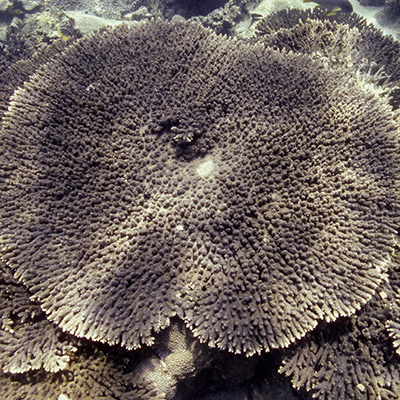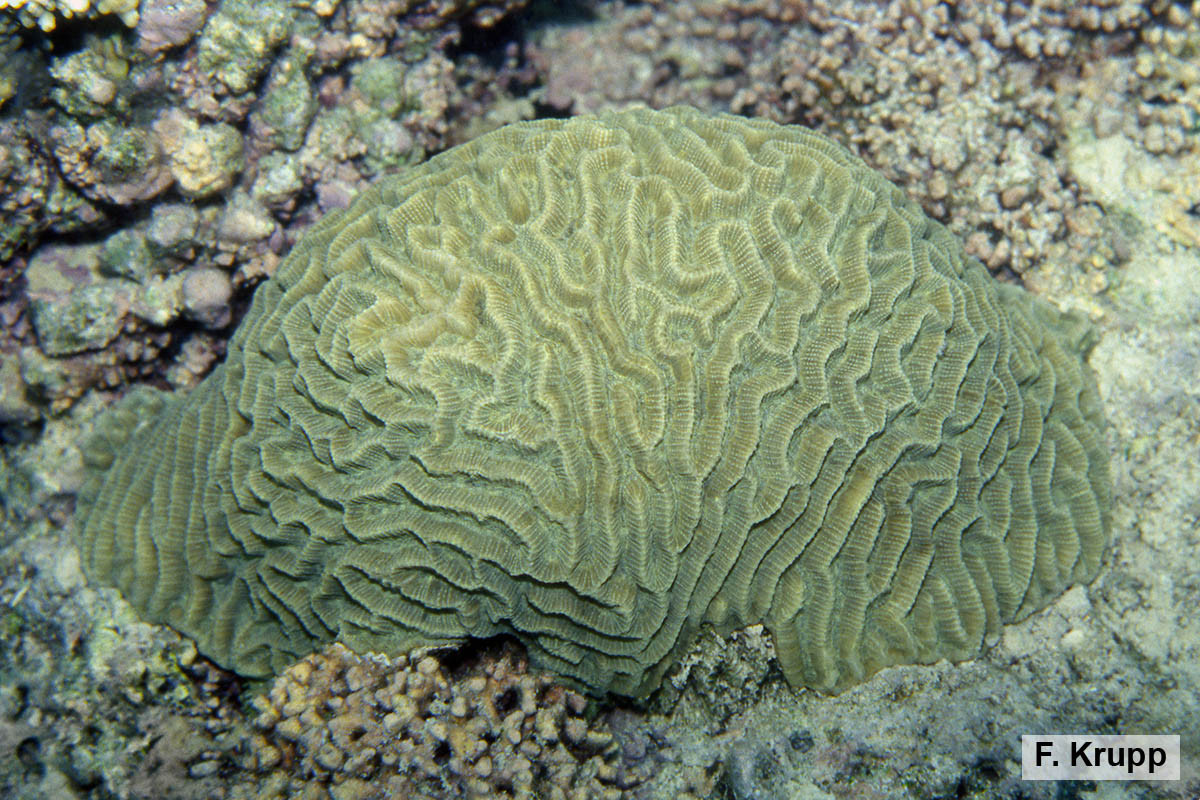Name: Platygyra daedalea
Common name: Brain Coral
Local name:
Scientific name: Platygyra daedalea
Classification: Class – anthozoans, Anthozoa; order – stony corals, Scleractinia; family – merulinids, Merulinidae
Size: The species forms large coral heads of usually up to 1 m, and exceptionally several meters in diameter. Calices are normally 5 mm wide, with walls being 5 – 6.5 mm high and 1 – 2.2 wide.
Habitat:
In the Arabian Gulf, Platygyra daedalea occurs in various coral reef environments, at depths ranging from 1 – 10 m, with larger colonies usually found in deeper waters. This species also occurs in isolated colonies on subtidal rocks.
Distribution:
In the Indo-West Pacific, the Brain Coral is found from southern and eastern Africa, the Red Sea, southern Arabia and the Arabian Gulf, to Japan, Southeast Asia, Australia, and the oceanic West and Central Pacific.
Conservation status:
: In the IUCN Red List, the species is listed as Least Concern. However, because of predicted threats from climate change and ocean acidification it will be important to reassess Platygyra daedalea in the future. Like other stony corals, it has declined considerably in Qatari waters over the past two decades
Description:
Colonies are massive or encrusting and characterized by long meandroid valleys, hence the name brain coral. They have thin walls with valleys being wider than the separating walls. The walls are sharply angular and perforated. Septa extend above the corallite and they are pointed above the walls. The columella is weakly developed and centers are indistinct. The color varies from brown, tan, green to gray-green, sometimes with brighter green or gray valleys.
Size: The species forms large coral heads of usually up to 1 m, and exceptionally several meters in diameter. Calices are normally 5 mm wide, with walls being 5 – 6.5 mm high and 1 – 2.2 wide.








